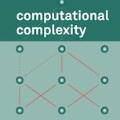In this paper we apply neural networks with local converging inputs (NNLCI), originally introduced in [arXiv:2109.09316], to solve the two dimensional Maxwell's equation around perfect electric conductors (PECs). The input to the networks consist of local patches of low cost numerical solutions to the equation computed on two coarse grids, and the output is a more accurate solution at the center of the local patch. We apply the recently developed second order finite difference method [arXiv:2209.00740] to generate the input and training data which captures the scattering of electromagnetic waves off of a PEC at a given terminal time. The advantage of NNLCI is that once trained it offers an efficient alternative to costly high-resolution conventional numerical methods; our numerical experiments indicate the computational complexity saving by a factor of $8^3$ in terms of the number of spatial-temporal grid points. In contrast with existing research work on applying neural networks to directly solve PDEs, our method takes advantage of the local domain of dependence of the Maxwell's equation in the input solution patches, and is therefore simpler, yet still robust. We demonstrate that we can train our neural network on some PECs to predict accurate solutions to different PECs with quite different geometries from any of the training examples.
翻译:在本文中,我们应用最初在[arXiv:2109.09.316] 中引入的具有本地凝聚投入的神经网络(NNLCI),以在完美的电导器(PEC)周围解决马克斯韦尔的两维方程式。对网络的投入包括两个粗粗格网格中计算方程式的低成本数字解决方案的局部补丁,而产出是本地网点中心一个更准确的解决方案。我们采用了最近开发的第二级定点差异法[arXiv:2209.007.40],以生成输入和培训数据,在特定终端时间捕捉到PEC电磁波在特定终端时间散布的电磁波。NNLCI的优势在于一旦培训它就为昂贵的高分辨率常规数字方法提供了高效的替代方案;我们的数字实验表明,从空间-时空网点的数量来看,计算复杂度节省了8美元。与现有应用神经网络直接解答的研究工作相比,我们的方法利用了Maxwell公司电磁波波波波在特定时间段上散布电磁波波的局部域,因此,我们还是能够以不同的方式显示我们不同的方式从投入解决方案的电压网络进行精确的预测。




